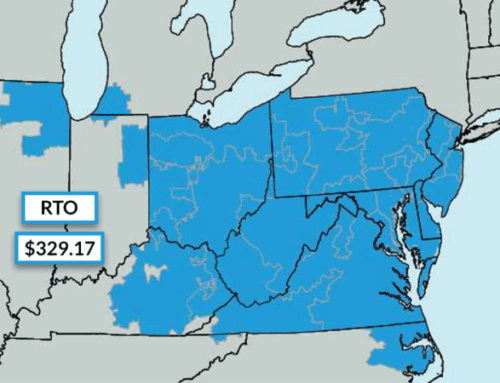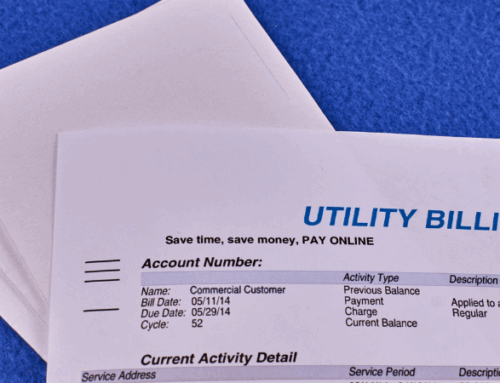As energy markets continue to evolve, commercial energy customers are constantly seeking ways to manage natural gas costs. One increasingly popular approach is participating in natural gas demand response programs, which allow businesses to modify their natural gas consumption in exchange for financial incentives. These programs offer opportunities for businesses to reduce energy demand during high-cost periods, helping utilities to balance natural gas supply and demand while offering lower utility bills to consumers.
In this article, we’ll explore what natural gas demand response programs are, how they work, and how they benefit commercial energy customers. We’ll also highlight how these programs fit into the broader energy landscape and how they contribute to greater energy efficiency.
What Are Natural Gas Demand Response Programs?
Natural gas demand response programs are initiatives typically run by utilities that incentivize businesses to reduce their natural gas usage during peak demand periods. By cutting back on energy consumption during these times, businesses can help alleviate the strain on natural gas pipeline distribution networks, avoid peak pricing, and support market stability.
Just like electric demand response programs, natural gas demand response programs are designed to manage peak demand for natural gas, particularly during cold winter months when natural gas supply is strained. These programs help utilities maintain reliable service and avoid the costs associated with securing additional natural gas when prices are very high. In return, participants receive financial incentives or rebates based on their ability to reduce consumption when called upon.
How Do Natural Gas Demand Response Programs Work?
Natural gas demand response programs are typically initiated during peak periods, when the demand for natural gas is high and the natural gas supply system is under pressure. Utilities alert participating businesses to reduce their gas usage during these times, either by adjusting their operations or switching to alternative fuel sources.
Participating businesses may reduce gas consumption by:
- Postponing non-essential processes that require natural gas.
- Switching to alternative fuel sources, such as electricity or oil, during demand response events.
- Utilizing stored energy, if available, to temporarily reduce reliance on natural gas.
In exchange, participants are rewarded with financial incentives based on the amount of gas consumption they are able to reduce during the event. This not only helps commercial customers earn money but also lowers natural gas bills due to the curtailed usage.
Firm vs. Interruptible Customers
Firm and interruptible natural gas service customers play distinct roles in natural gas demand response programs, shaping how utilities manage energy supply and demand.
Firm Natural Gas Service
Firm service customers are guaranteed uninterrupted access to natural gas, regardless of demand spikes or supply constraints, making them less likely to participate in demand response events. These customers, such as hospitals or critical manufacturing facilities, prioritize consistent service and typically pay higher rates for this reliability. Firm service customers are allowed to enter into demand response programs; however, they typically require access to alternative fuel supply as reducing usage is not always an option.
Interruptible Natural Gas Service
Interruptible service customers agree to reduce or halt natural gas delivery during peak demand periods in exchange for lower rates or financial incentives. These customers, often large industrial or commercial users, are ideal candidates for natural gas demand response programs, as they can adjust operations or switch to alternative energy sources when needed. Interruptible gas programs are used to help utilities balance natural gas supply and demand. This distinction allows utilities to tailor demand response strategies, with firm customers providing stability and interruptible customers offering flexibility during peak periods.
Benefits For Commercial Energy Customers
For commercial energy customers, participating in natural gas demand response programs offers several key benefits:
Cost Savings
By reducing gas consumption during expensive peak periods, businesses can avoid high natural gas prices and earn financial incentives from utilities. This can lead to significant savings, especially for businesses with large energy demands.
Improved Energy Efficiency
Participation in demand response programs encourages businesses to adopt more energy-efficient practices, such as optimizing equipment and implementing better load control strategies. This can lead to long-term energy savings and reduced operational costs.
Environmental Benefits
By helping reduce the strain on natural gas distribution systems and lowering the need for additional gas during peak periods, demand response programs support energy efficiency and sustainability initiatives. This helps businesses reduce their carbon footprint and align with broader sustainability goals.
For businesses in states with deregulated natural gas markets, understanding demand response programs can be a vital part of an overall energy management strategy. Learn more about how natural gas deregulation can provide commercial customers with greater flexibility in choosing suppliers and pricing models.
How Utilities Manage Peak Demand
Utilities play a critical role in balancing natural gas supply and demand, particularly during peak periods. In times of high demand, such as during cold weather when heating systems are running at full capacity, utilities must ensure that there is enough natural gas in the system to meet the needs of their firm service customers. If demand exceeds supply, utilities may have to purchase additional natural gas at a premium, leading to higher costs that are passed on to customers.
Natural gas demand response programs help utilities manage these challenges by incentivizing businesses to reduce their consumption during peak demand periods. By doing so, they help utilities avoid costly purchases of natural gas and reduce the risk of gas shortages or service disruptions. The utilities, in turn, pass on these savings to participants in the form of financial rewards, making demand response programs a win-win for both utilities and commercial customers.
The Role Of Technology In Natural Gas Demand Response
As technology continues to advance, it is playing an important role in improving the effectiveness of natural gas demand response programs. Smart meters, sensors, and advanced load control technologies allow businesses to monitor and adjust their natural gas usage in real-time. This gives commercial customers greater control over their energy consumption and makes it easier to respond to demand response events.
Additionally, artificial intelligence (AI) and machine learning are increasingly being used to predict peak demand periods and recommend strategies for optimizing gas usage. These technologies can analyze historical data, weather patterns, and other variables to forecast when natural gas demand will spike and help businesses prepare to reduce their consumption.
For businesses looking to invest in these new technologies, energy efficiency incentives and rebates are available to help offset the cost of upgrading to more efficient systems.
Natural Gas Demand Response Programs In Action
One example of how natural gas demand response programs can be successfully implemented is in the manufacturing sector. Large industrial plants often rely heavily on natural gas for production processes, making them ideal candidates for these programs. By implementing load control strategies during peak periods, these businesses can shift their energy usage to off-peak hours or reduce gas consumption temporarily.
For example, during a peak demand period, a manufacturing plant may choose to reduce its gas usage by scaling back non-essential production activities or switching to a backup fuel source. In return, the plant receives financial compensation from the utility for its participation in the demand response event, helping offset operational costs and providing a direct financial benefit.
These plants may also consider switching to interruptible rate tariffs that allow them to pay lower distribution fees for natural gas.
The Future of Natural Gas Demand Response
As natural gas supply and demand continue to fluctuate due to geopolitical tensions, extreme weather, and shifting energy markets, natural gas demand response programs will likely become an even more important tool for utilities and commercial customers. These programs offer a practical solution for managing energy costs, reducing demand during peak periods, and supporting market reliability.
In the coming years, we can expect to see continued advancements in energy demand response technology, making it easier for businesses to participate in these programs and realize significant energy savings. Additionally, as the world shifts toward more sustainable energy solutions, natural gas demand response programs will play a crucial role in helping businesses transition to more energy-efficient practices while maintaining operational flexibility.
Want To Learn More?
Natural gas demand response programs offer substantial benefits for commercial energy customers by reducing energy costs, improving efficiency, and supporting sustainability efforts. By participating in these programs, businesses can reduce their reliance on natural gas during peak periods and earn financial incentives. Contact our team of natural gas experts today to learn more about how to participate in a natural gas demand response program.
To learn more about how your business can benefit from these programs and explore additional strategies for optimizing your energy usage, visit our resources on natural gas hedging, natural gas supply-demand, and how to shop for natural gas.



